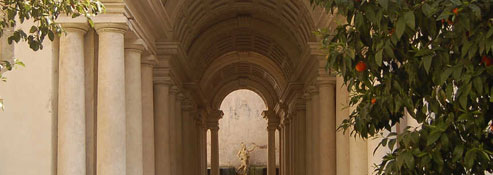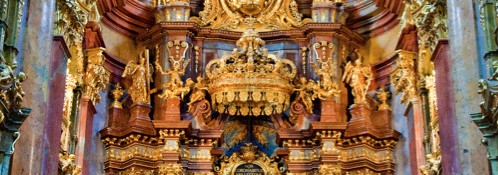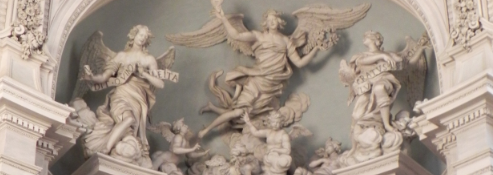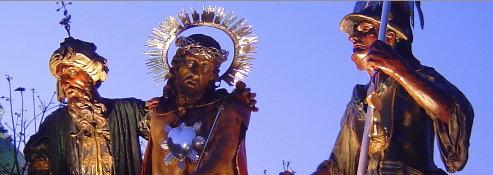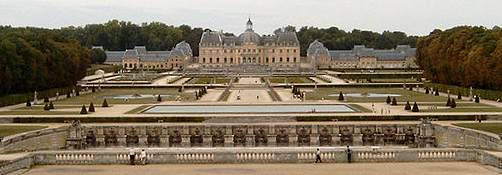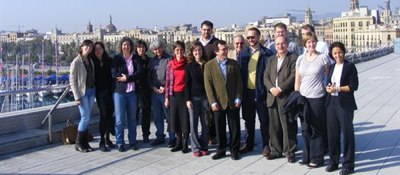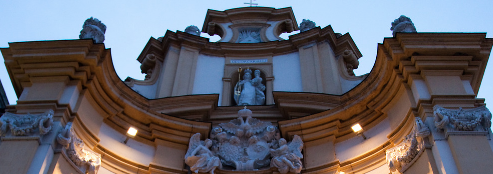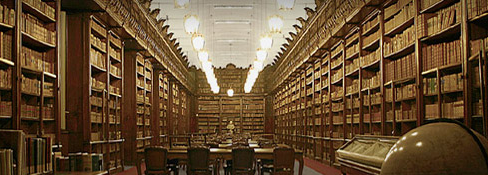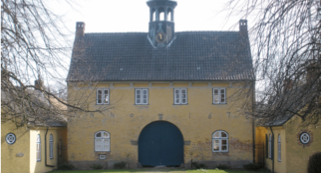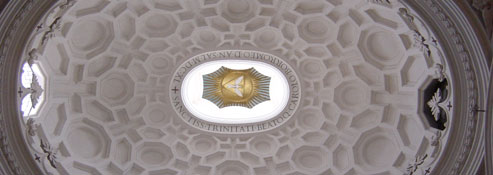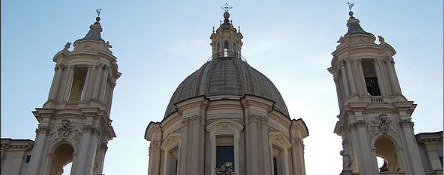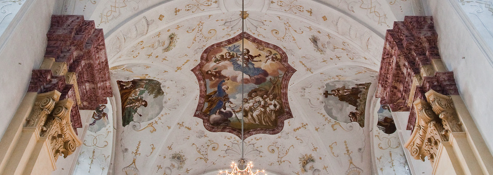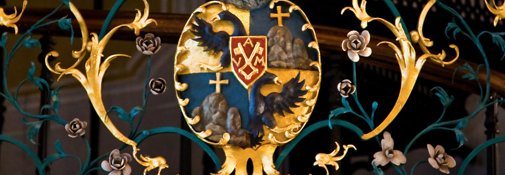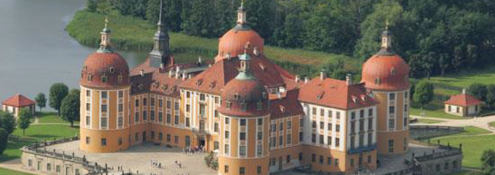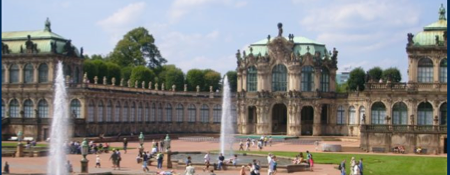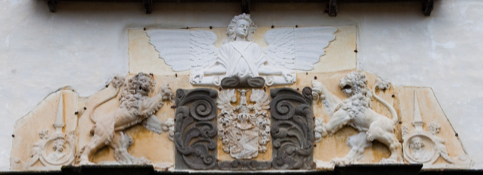Introduction [1]
The bibliographical production on Neapolitan Baroque painting is almost as extensive as the quantity of paintings produced in the 17th Century. Every two months a new text appears on the market written either in Italian [2], Spanish [3], English [4], French [5], German [6] or even modern Greek. [7] Since 1981 there is even a specialized journal dedicated to 17th Century Neapolitan art, Ricerche sul´ 600 napoletano, published annually and that in its issues from 1998 until 2006 included a section titled "Per Luca Giordano", dealing exclusively with this painter. This situation makes it almost impossible to keep up to date on a subject that progressively widens its scope. It is not only difficult to read the publications but often to find them.
Luckily for scholars exhibitions of Neapolitan Baroque painting are periodically organized. They constitute an important updating of information and often include exhaustive bibliographic references. Since the 1980s exhibitions have been presented in America as well as Europe. [8] Between them, Civiltà del Seicento a Napoli [9] marked a turning point in studies in the field, opening the way for subsequent shows such as the recent Ritorno al barocco. Da Caravaggio a Vanvitelli [10], celebrated in Naples in 2008.
However such an abundance of written material can constitute on occasions an obstacle for research, when the accumulation of details prevents the researcher from having a clear view of the overall artistic panorama or the evolution of painting in the city during the baroque period. A general vision must always take into account works that have disappeared, works that influenced a generation of painters but we can only imagine them from literary references. Exhibitions logically do not include these works nor do they include frescos, which are some of the most important paintings created in Naples in the 17th century - such as Giovanni Battista Caracciolo´s (b.1578-d.1635) in the Royal Palace and Luca Giordano's (b.1634-d.1702) in the Treasure Chapel of the Charterhouse of San Martino. Even if they are mentioned in the catalogue notes these works take second place to the canvasses on display. Currently there is still no monograph on Neapolitan baroque frescoes [11] nor are there studies of some of the most important and active painters in the period such as Francesco de Mura (1696-1782) or Nicola Malinconico (1663-1721). This simple fact puts in evidence the opportunities for research that still exist on the Neapolitan baroque.
Additionally studying works in situ either in Naples or in Campania is often difficult, even when the works are in public places such as churches or museums they are often in spaces that are not easily accessible or can only be visited during certain hours or days, undoubtedly in many cases to reduce the possibilities of robbery [12]. It is even more difficult to gain access to works in private collections and sometimes public as well as the private works are so poorly preserved that they cannot be easily studied.
This complex and saturated panorama paradoxically creates an important opportunity to test a wider focus that permits different approximations to the context that gave birth to and nurtured the Neapolitan baroque, showing the possibilities that offer a topic that is only apparently well studied [13].
An overview of Neapolitan painting in the second half of the Seventeenth Century
The panorama of 17th Century Neapolitan painting that is traditionally found in academic studies normally presents a lineal evolution beginning with the arrival of Caravaggio in 1609. His (supposed) naturalism would define a great part of the first half of the century thanks to his influence on local painters such as Battistello and Carlo Sellito (1581-1614). This trend would be reinforced by the activity of José de Ribera (1591-1652) who, towards the end of his career embraced the neo-Venetian current that will coexist with an early classicism introduced in Naples by Domenico Zampieri, known as Domenichino (1581-1641) and Giovanni Lanfranco (1582-1647). Massimo Stanzione (1585-1658) and his disciples tempered this style, blending classicism with local tenebrist tendencies.
For the second half of the century the evolution is even simpler [14], the moment that would mark a turning point in Neapolitan painting was the arrival of Mattia Preti (1613-1699) in the city, and above all the plague of 1656. The key works that signaled the start of Neapolitan baroque were the frescoes that Preti painted on the city gates as ex-votive paintings celebrating the end of the epidemic. After Preti left for Malta the place of the most important painter in the city was occupied by Giordano, who would dominate the artistic scene until his death, leaving behind a substantial group of disciples and followers who would perpetuate his style until the first half of the 18th Century, linking up with the art of Francesco Solimena (1657 -1747) in an almost seamless transition to the new century. In fact many of the exhibitions of 17th Century Neapolitan painting have used the subtitle "from Caravaggio to Giordano". [15]
But this model of transition from naturalism to high baroque, and from this to an incipient classicism, reinforced in the 18th Century, resembles too closely the model established for Roman painting of the period - which would advance from naturalism to the classicism of Reni and Domenichino then to the high baroque of Pietro da Cortona (1596-1669) to finish in the classicist synthesis of Carlo Maratti (1625-1713). A model that could be applied to other artistic centers such as Madrid, where court painting was defined from the middle of the 17th Century by the activity of Velazquez, who would influence Spanish art until the beginning of the 18th Century, as shown by the works of Juan Carreño de Miranda (1614-1685) or Claudio Coello (1642-1693). Also the Parisian Académie Royale de Peinture et de Sculpture, would defend classicism as the most appropriate style for the works commissioned by the king, a style that triumphed in the painting of Charles Le Brun (1619-1690) and Pierre Mignard (1612-1695) despite the disputes in the academy between followers of Poussin and followers of Rubens.
Nevertheless the society of the period not only ignored these categories, but even appreciated the stylistic diversity offered by these painters as can be seen in collectors' inventories in the 17th and 18th centuries. These collections included works with all manner of subjects, formats, and artists. Simply observing the altars of any Neapolitan baroque church one can see works in the same chapel (that is, commissioned by the same client) from artists that art history texts consider antagonistic. In this respect Naples is different from other European capitals in the period, where although naturalism was prevalent at the beginning of the 17th Century there was a progressive movement to more homogenous styles that identified the painters from each city, although this does not mean that there weren't naturalistic painters at the end of the century working throughout Italy.
It is also difficult to clearly categorize a landscape, battle scene, or still life as tenebrist, giordanesque, or classicist, emphasizing that these generally used classifications seem to take into account only history painting.
However between 1650 and 1700 there were a great number of painters working in Naples who did not comfortably fit into these categories. The aforementioned classification, which initially seemed useful and logical becomes artificial to such an extent that some scholars have created a different category of "independent" painters, but without defining from what or whom were they independent. This group would include Giacomo del Po (1652-1726) and Domenico Antonio Vaccaro (1678-1745) [16] but could also include others like Giovanni Battista Spinelli (active 1630-1660) and Francesco Antonio Altobello (1637-1695) as well as some other painters who occasionally approached a giordanesque style such as Giacomo Farelli (1624?-1701) or Guglielmo Borremans (1670-1744).
When one observes that the late works of Ribera such as the Communion of the Apostles in the Charterhouse of San Martino, achieve a perfect union of naturalism, classicism and the neo-Venetian current that was so important in Rome in the 1630s, perhaps the Neapolitan works of Mattia Preti, so monumental and tenebrist, and painted after the relative failure of his frescoes in Sant'Andrea della Valle [17] - should be viewed as an involution rather than a progression.
Also it must be taken into consideration that although Giordano influenced Neapolitan painting for many years he was absent from the city during ten years, between 1692 and 1702, when he was Court painter to Charles II in Madrid. He left a well-organized workshop that continued to receive important commissions although it could not compete with the rising fame of Francesco Solimena after the success of his frescos for the sacristy of San Paolo Maggiore. And although there is a trend to classicism in the first half of the century, the most important representative of this style in Naples, Francesco di Maria (1623?-1690), was active practically the entire second half of the century until his death in 1690 and Andrea Vaccaro (1604-1670) continued to receive commissions until the year of his death in 1670.
These examples show that reality is more complex than what is usually presented in art history texts and that the Neapolitan artistic milieu is much more varied than is usually supposed. Knowledge of the historical context in which all of these trends appeared helps to better understand the period.
The context of Neapolitan baroque painting
In the 1600s Naples was the most populated city in Europe. Carlo Celano wrote in 1692 that "Napoli è una delle più populate città d'Europa. Basterà dire che nell'anno 1656 fuerono uccise dalla peste quattrocento cinquanta mila persone, per un conto fatto alla grossa; e pure non v'era contrada che non vi fusse rimasto qualche d'uno; hora la gente è così propagata ed accresciuta da' regnicoli e da altri forastieri, che si fa conto d'haver cinquecento mila habitanti" [18], with data that were not entirely correct as modern calculations place the population in 1500 at 125,000 growing to 300,000 by 1600, whereas the second most populated city in the kingdom, Lecce, had between 15.000 and 30.000 inhabitants during the 16th and 17th centuries. [19] Naples continued to be the most populated city in Italy until the 19th century (and probably the most overpopulated too).
The great expansion of Naples happened precisely during the 16th and early 17th centuries and was motivated by a series of changes initiated by the viceroy Pedro Alvarez de Toledo aimed at making Naples a modern city. [20] The viceroy ordered that the streets be paved, reorganized the water supply and sewers, renovated and enlarged the city walls, and created the Spanish Quarter, the Via Toledo, the Hospital and Bank of San Giacomo degli Spagnoli. [fig. 1] These changes displaced the center of the city towards the west in a process that reached its highest point with the creation of a new royal palace and would continue with the urbanization of the coastline of Chiaia and the creation of the Strada di Medinacoeli opened by Luis Francisco de la Cerda y Aragon, IX Duke of Medinaceli (viceroy between 1695 and 1702). [21]
Among the aims of these reforms, in addition to improving the city's defense works was the objective of attracting the country aristocracy to the capital, in this way it was expected that the nobles would cease being feudal lords and would become loyal courtiers. [22] It was also expected to concentrate all the courts, magistracies and bureaucracy of the Kingdom in the capital, as well as the only university and manufactures too. [23]
The status of the capital was improved with the creation of favorable tax conditions for its inhabitants, or at least more benevolent than the ones practiced in the countryside and smaller cities. The immediate effect of this decision was immigration from rural areas [24] as Naples became a promised land, a place where common people could improve their lives. Even if they had to work in precarious jobs or sleep on the street, they were reluctant to go back to the countryside, where they knew life was undoubtedly worse. [25]
The price that was paid for this development was the loss of balance with the province, an area that encompassed a large part of Italy, which was slowly but progressively sinking into poverty as it lacked the basic infrastructures to progress. At the same time the capital was transforming itself into "a symbol and an instrument of royal power". [26]
To achieve the appearance of a modern capital, Naples needed a new urban planning. Via Toledo was designed as the new center that would make visible the power and riches of the city through the building of new palaces to relocate the vice regal nobility and its servants and also through the renovation of those already existing. The process would culminate with the construction of the Royal Palace, designed by Domenico Fontana and planned to welcome and house King Philip III during a visit to the city that finally was not carried through. [27]
However this seat and symbol of power, was a center for a changeable power as the viceroys were in possession of their office for terms of three years [28], thus they were not able to create artistic posts similar to the "pintor de cámara" in Madrid. [29] In this respect, the Neapolitan situation also cannot be compared to Papal Rome, where a temporal political power can be found, but never so temporary as the one in Naples. Besides, the viceroys personalities varied greatly; some of them were important collectors, like the count of Monterrey or the Marquis of Carpio [30] while others, like Cardinal Pascual de Aragón, were more interested in charitable institutions or the search for religious relics. [31]
The same problem of temporality was present in the Church, the succession in the office of Cardinal Archbishop of Naples of such important personalities as Innico Caracciolo or Ascanio Filomarino permitted receiving important commissions, such as Giordano´s to paint a series of large canvases of images of saints for the central nave and transept of the gothic cathedral, commissioned by Caracciolo or the new ceiling of Carmine Maggiore commissioned by Filomarino, however there was little stability nor certainty of subsequent commissions as was true of the rest of the possible patrons in monasteries and convents whose offices were elective and were rotative.
The role of maecenas was carried out by part of the local nobility who collected art for the prestige of having a gallery, such as the Prince of Tarsia, the Prince of Cellamare, the Duke of Maddaloni or the Duke of Avalos and by a rich international merchant class [32] who would become an important group rivaling the aristocracy in artistic patronage. [33] As a port and commercial hub Naples was cosmopolitan and had a large foreign population, some of which such as the French, English, and Ragusans had their own consulates [34], whereas others such as the Germans, Lombards, Florentines, Genoese, and logically the Spanish had their own churches. The importance of these congregations varied. Some decorated their temples with works imported from their home cities and in the church of San Giovanni de´Florentini there is an important group of works by Marco Pino (1521-1583) and Giovanni Balducci (ca. 1560-ca. 1630) [35] and the Virgin with child over the City of Genoa and the Crucifixion by Domenico Fiasella (1589-1669) were originally in the church of San Giorgio de' Genovesi. [36] They also commissioned works form artists active in Naples and from the same San Giorgio came Battistello's Miracle of Saint Anthony and the widely known works by Caravaggio that were commissioned for the now disappeared church of SantAnna de' Lombardi which also contained works by Fabrizio Santafede (1560-1635), Battistello, and Carlo Sellito. [37] The wealth of the foreign merchants iwas notable, as some of the Genoese merchants eventually became part of the local aristocracy such as the Berio family, Marquis of Salza. [38] The best known examples however were undoubtedly the Flemings Gaspare Roomer and Jan Vandenenynden who created important art collections and were patrons of many Neapolitan painters. [39] The first not only possessed a palace near the Via Toledo, later sold to the Duke of Maddaloni [40], but became an important buyer of old and contemporary Neapolitan painting [41] which he occasionally sent to Flanders. [42] He also financed the construction of the monastery of Santa Maria Maddalena de' Pazzi. [43] The second [44] possessed the Zevallos Stigliano Palace [fig. 2] on the Via Toledo and formed an art collection comparable to that of Roomer. Among the works included in this collection were The Rest on the Flight to Egypt by Nicolas Poussin (New York, Metropolitan Museum of Art), Ribera's Saint Sebastian (Naples, Museo de Capodimonte) and the Banquet of Herod by Rubens (Edinburgh, National Gallery of Scotland) which profoundly influenced Neapolitan painting when it arrived in the city in 1640. [45] His son Ferdinand "quanto rico tanto virtuoso" [46] was ennobled with the title of Marquis of Castelnuovo and had a villa constructed in the Vomero with views of the Gulf of Naples. [47] He was an active and pious maecenas financing the tabernacle of the church of San Luigi di Palazzo, one of the most important in vice regal Naples. [48] One of his descendants, Michele Gallo Vandeneynden became bishop of Capri, demonstrating the enormous social mobility that existed in the City, very different from the court in Madrid. This helps explain how Naples became in the popular imagination a promised land where anything was possible. The power of the merchant class and the diversity of their origins and tastes help explain the enormous variety of Neapolitan painting in the second half of the 17th century.
This social mobility and unprecedented growth in the capital explains also the social instability that produced class tensions culminating in the famous rebellion of Masaniello. [49] The economic power of the new merchant elites was questioned and there were no lack of critical references to Roomer and Vandeneynden who were classified as "miserabilissimi fiamenghi delle più povere famiglie che da quelle vaste Provincie venissero in Napoli a negoziare, ed ambidue straricchiti con i partiti di corte". [50]
The rebellion of 1646 marked the beginning of the progressive economic decline of Naples, which in the second half of the 17th century was also affected by a series of natural disasters. The first of these and the surely the most important was the plague of 1656 which decimated the population and took the lives of some of the most important artists of the period such as Bernardo Cavallino (1616-1656), Francesco de Rosa (1607-1656) or the brothers Cesare (ca. 1605-ca. 1652) and Francesco Fracanzano (1612-ca. 1656) as well as some of the wealthiest patrons including Giovan Camillo Cacace "che per le sue rare virtù e sapere arrivò ad esser dal nostro gran monarca delle Spagne assunto alla toga di presidente della Regia Camera, e poscia a quella del Supremo Collateral Consiglio, e di regente della Cancelleria", according to Carlo Celano, who also indicated that he accumulated a fortune of a half a million escudos. [51] Lastly the earthquakes of 1688 and 1694, preceded by an eruption of Vesuvius also influenced the social and artistic situation. On one hand the natural disasters were not favorable for patronage but the need to reconstruct churches and palaces created new opportunities for the artists that survived the disasters.
During the rebellion of Masaniello civic buildings including the Customs House [52], the Theater of San Bartolomeo [53] and the Palace of the Prince Bisignano [54], as well as religious buildings in the case of the church of Santa Maria Visitapoveri [55] and the church of Santa Marta [56], whose reconstruction offered an important opportunity for the elderly Andrea Vaccaro who received the commission for the painting of Saint Martha for the main altar.
The plague of 1656 reduced the competition for the surviving artists but also the demand for paintings and the most immediate effect was the reduction of prices of paintings. Despite these facts new works were commissioned, almost always as ex-votive works, one of the most important was the Church of Santa Maria del Pianto, constructed with the donation of the Count of Peñaranda and whose altars were painted by Andrea Vaccaro and Luca Giordano, [57] indicating that for their contemporaries their differing styles were perfectly valid and compatible in contrast to theories that appear repeatedly in modern art history scholarship.
Logically the events that had the most direct repercussion on Neapolitan art were the earthquakes. The earthquake of 1688 was the most notable and had the most effect on artistic patrimony, seriously affecting the structure of the cathedrals of Benevento, Aversa, and Salerno [fig. 3] as well as other buildings in Campania. In Naples the damage was also extensive; cracks appeared in the walls of the cathedral causing damage to Giordano´s large canvases. Falling stucco destroyed the pulpit, which had to be reconstructed. [58]
Many of the aristocratic palaces were also damaged including those of the Carafa and Spinelli families in the Piazza San Domenico Maggiore, where the Dominican convent was also affected. The Church of St. Severino and St. Sosio also suffered damages. [59]
However the most emblematic monuments that were destroyed in the earthquake were the facade of the Church of San Paolo Maggiore and the Cupola of Gesù Nuovo. The first still conserved elements of the temple of Castor and Pollux of the ancient Neapolis and according to Celano was the "più bella et antica macchina ch'havevamo nella nostra città. Machina che era di meraviglia a' forestieri, e di gran decoro alla nostra patria" [60], while the second was one of the largest in the city and was decorated with frescos painted by Lanfranco. Some of the altars and chapels were also destroyed such as the chapel of Saint Ignatius Loyola and the cupola of the Merlino chapel, which Giordano, had only finished a few months earlier. [61]
Logically the destruction of these works created an opportunity for many artists and for the city, which was constantly modernizing and investing in artistic renovation. In this manner Paolo de Matteis (1662-1728) had the opportunity to paint the frescos in the new cupola of Gesù Nuovo, reconstructed by Arcangelo Guglielmelli between 1693 and 1694. [62]
The strategies of Neapolitan painters
In a heavily populated city subjected to constant political, social, and physical changes, it was without a doubt difficult to find stable patronage to make a living as a painter. Additionally its position as capital of the Kingdom and a center of institutions and industry attracted painters from many regions. They were attracted by the constant demand for works to embellish the collections of the aristocracy and wealthy merchants, works for the viceroy and for the decoration of his Spanish foundations [63] and commissions from monasteries and churches which were in constant renovation because of the earthquakes and eruptions. At the same time it was difficult to find commissions in the provinces because the wealth and patrons were concentrated in the capital.
This led artists to migrate to the city, also despite being part of the Spanish empire, it was not necessary to be a member of a guild or to pass an examination to paint as was the case in Spain. [64]
At the same time this situation meant that the principal problem for an artist to make his way in Naples was the enormous number of potential competitors. A situation that existed since the beginning of the 1600s as Bernardo de Domeninici indicates in his biography of Ribera, describing the difficulties for Ribera to obtain commissions in his early years because "the great number of contemporary painters among which figured important artists who received all the commissions". [65] Neapolitan painters responded to this situation, although not always in the most satisfactory manner.
Without going to the extremes of trying to murder their competitors, as apparently occurred with Domenichino [66], Guido Reni (1575-1642) [67] and Giuliano Finelli (1601-1653) [68] if we believe Bernardo de Dominici and Giovanni Battista Passeri. The brothers Cesare (Bisceglie ca. 1605 - Barletta ca 1652) and Francesco Fracanzano (Monopoli 1612 - Naples ca 1656) [69] can be considered prototypes of the talented provincial artists who came to the capital. In the mid 1620s they entered in contact with Ribera´s workshop, the most important of the period, where they learned to superficially imitate his technique and adopt the neoventian style so important all over Italy in the 1630s. They progressively adopted the classicism of Stanzione and also the high baroque of Lanfranco demonstrating a clear effort to keep up with the latest trends to be able to present a modern product to their clients. At the same time they did not ignore a more conservative clientele and continued to produce works with a marked tenebrist style until the end of their brief careers. Francesco, following tradition prevalent at least since the Middle Ages married into the family of another painter when he wed Giovanna, the only sister of Salvator Rosa (1615-1673). Despite their efforts and despite having obtained some prestigious commissions including one of the altars in the transept of Gesù Vecchio and one in the Church of Trinità dei Pellegrini, both died in poverty according to Bernardo de Dominici [70], surviving by painting small devotional images that they sold door to door. De Dominici ponders at the beginning of their biography if this was so because of "a certain combination of unknown causes vulgarly called luck" or to the excess of painters working in Naples [71], an explanation he insists on throughout his text. The same author accuses Cesare of fomenting criticism of the painting of the altar of the Church of San Francesco Saverio, a work by Salvator Rosa, which was removed from the altar and replaced with a new painting by Cesare. This suggests another easily used manoeuver against artists whose works are in public places and exposed to all sorts of criticism. Of course this is a risky tactic as it is probable that it will eventually backfire.
To avoid falling into poverty, many painters in 17th century Naples endeavored to locate their workshops near the economic center of the city, Piazza Caritá. Located at the end of Via Toledo it was the site of an important daily market and close to the palaces of the aristocracy and to the inns where many visitors and potential clients stayed. [72] The area around the Piazza became an authentic artistic neighborhood, which explains also the high prices of rents in the zone [73] and the fact that many artists rented workshop space and ocassionally shared the expenses with other painters. [74]
Another way to publicize work was to make engravings of one's paintings, as Lanfranco did with his series of Evangelists in the pendentives in the cupola of the Gesú Nuovo or the Apostles from the nave of the Charterhouse of San Martino. [75] [fig. 6] Ribera did the same with his Drunken Silenus or the equestrian portrait of Juan Jose de Austria, going one step further in engraving the plates himself [76] saving the cost of the engraver and controlling the entire production process. Besides these prints, Ribera engraved a series of compositions that were not copies of his paintings publicizing his abilities as an artist to a wider public. Giordano took up this idea at the beginning of his career.
In the same line of offering the works of the great masters at more accessible prices was the tactic of replicating paintings in the workshop or adapting the quality of the paintings to the pocket of the buyer as Giordano did with his famous three brushes of gold, silver, and bronze. [77]
He was perhaps the most representative artist in developing strategies in Naples to obtain commissions never leaving a single element to chance. One way he used to minimize risks was to collaborate on occasions with other artists such as Giuseppe Recco (1634-1695) [78] and Ascanio Luciani (ca. 1621-1706) [79], painting the figures in their still lives and landscapes and thus increasing the price of the painting by converting a still life or painting of ruins into a narrative scene or landscape with figures. [fig. 8]
Occasionally to avoid losing a commission or to find new clients, he went to the extreme of donating his works for free, although this only occurred with works that would be on public display. He did this with his St. Nicholas saving the cup bearer in the church of Santa Brigida in Naples when he was competing with Farelli and Stanzione and he did this again in 1668 when he sent, without a previous commission, an Assumption of the Virgin for the Church of La Salute in Venice [fig. 9] in substitute for a work ordered from Volterrano but that had not been delivered. [80]
The success of this tactic is demonstrated by the two large canvasses that Giordano painted for this church - The Birth of the Virgin and the Presentation of the Virgin in the Temple and that he also painted the cupola of the transept and the ceiling of the Sacristy in Santa Brigida in Naples.
Lastly given the success of artist's biographies in Italy, he decided to write his autobiography in 1681 [81], which he later modified and revised and which would serve as the base for the biographies of Francesco Saverio Baldinucci [82] and for De Dominici whose biography was published in Naples in 1729. [83] [fig. 10] He was one of the most discussed painter by his contemporaries with at least seven biographies written between 1681 and 1743. [84]
It cannot be ignored that in the extensive territories of the Kingdom of Naples there were also potential clients who thought works from the capital gave prestige, as all that was produced in Naples was associated immediately with quality.
Many of the regional centers counted with contacts in Naples, for example the monks of the Charterhouse of San Lorenzo in Padula had a guest house in the Pendino neighborhood that they used when they had business to attend to in the capital [85] and the Jesuits who had their principal residence in the Gesù Nuovo considered the whole kingdom as one religious province. Also the concentration of tribunals and industry in the city created a large transient population, residing in the city while they settled their suits or closed their contracts. These people served as intermediaries between provincial patrons and the artists residing in Naples, who could offer competitive prices to open new markets or could collaborate with other artists to send works to a city with less artistic competition. Doubtless it was in this manner that Giordano obtained the commission to paint the frescos at Montecassino or that de Matteis went to Taranto to paint the Chapel of San Cataldo. [fig. 11] Also there is a notable increase in works produced in Naples in the provincial cities that are closer to the capital as can be seen by the works of Nicola Malinconico in Capri and Sorrento, those of Giuseppe Simonelli in Aversa, and those of Giacinto de Populi in Salerno.
Conclusions
The exceptional social, economic, and geographic characteristics of Naples in the 17th century help explain the great diversity of paintings produced in the city where naturalist, classicist and high baroque works were produced simultaneously. This diversity responds to a multi-form demand that proceeded from different social classes as well as from the necessity for the painters to find a niche in a saturated market. This impulsed a series of novel strategies for obtaining commissions and created an artistic panorama unique in Europe for its variety and quality. Naples was far from being considered secondary or provincial. Giambattista Vico captured this ferment in 1709 when he wrote "In the fields of poetry, oratory, painting, sculpture, and other fine arts, based on the imitation of nature, we possess a wealth of supremely accomplished productions, on which the admiration of posterity has conferred the prestige of archetypal exemplarity. Thanks to the guidance offered by these masterworks, we are able to imitate, correctly and easily, Nature at her best. The invention of printing places at our disposal an enormous number of books. Hence, our scholars are not compelled to restrict their competence to the knowledge of one or another author, but can master a multiple, diversified, almost boundless domain of culture". [86]
Images
1. Vatican City, Galleria delle Carte Geografiche, Naples

2. Cosimo Fanzago, Palazzo Zevallos Stigliano, Naples, (portone) https://commons.wikimedia.org/wiki/Category:Palazzo_Zevallos_(Naples)#mediaviewer/File:PalazzoZevallosNaples

3. Salerno Cathedral, Interior

4. Carlo Celano Notitie del bello, dell'antico e del curioso della città di Napoli, (edition of 1724), Illustration showing the facade of San Paolo Maggiore before and after the earthquake of 1688

5. Francesco Fracanzano, Death of St. Joseph, Naples, Trinità dei Pellegrini

6. F. de Louvemont, St. Andrew (after Giovanni Lanfranco)

7. Luca Giordano, Assumption of the Virgin, Venice, La Salute, photo by Wolfgang Moroder https://commons.wikimedia.org/wiki/Category:Interior_of_Santa_Maria_della_Salute_(Venice)#mediaviewer/File:Santa_Maria_della_Salute,_altare_dell%27Assunta.jpg

8. Illustration from Bernardo de Dominici Vita del cavaliere d. Luca Giordano, Naples, 1729

9. Paolo de Matteis, Glory of St. Cataldus, Taranto, Cathedral, http://archeotaranto.altervista.org/archeota/taras78/Gloria_di_San_Cataldo_Cappellone

Notes
1. This article is part of a larger study, still in progress, on the Neapolitan painting of the second half of the 17th Century. I wish to thank Renato Ruotolo for his suggestions and Richard Gum for his help with the translation of the text.
2. Being the most recent N. Spinosa. Grazia e tenerezza in posa: Bernardo Cavallino e il suo tempo 1616-1656. Roma, Ugo Bozzi. 2013.
3. M. Hermoso Cuesta. Lucas Jordán y la Corte de Madrid. Una década prodigiosa. Zaragoza, Caja de Ahorros de la Inmaculada. 2008.
4. M. Bull. Inventing Falsehood, Making Truth. Princeton University Press. 2013.
5. A. Zezza. "Une histoire de l'art sans héros? Études récentes sur la peinture napolitaine du XVIIe siècle". Perspective 1 (2011), pp. 435-459. It can be read on http://perspective.revues.org/973#text (last view 15 April 2014, 13:14 h).
6. S. Ebert-Schifferer and E. Kieven. Der Fuerst unter allen lebenden Malern: Francesco Solimena und sein Werk zur Zeit der osterreichischen Vizekönige in Neapel (1707-1734). Himmer Verlag GmbH. 2011.
7. As it is the case of P. Ioannou The Life and Work of Belisario Corenzio. Crete University Press (in greek). 2011.
8. For instance Pintura napolitana. De Caravaggio a Giordano, celebrated in the Museo Nacional del Prado in 1985. A taste for Angels. Neapolitan painting in North America 1650-1750, held in Yale University in 1987 o Unter dem Vesuv. Kunst und Kuenstler vom 17. bis zum 19. Jahrhundert in Neapel und seinem Umfeld aus der Sammlung Harrach, celebrated in the Liechtenstein Museum of Vienna in 2006.
9. VV.AA. Civiltà del Seicento a Napoli. Naples, Electa. 1984. It was reprinted in 1998. The importance and success of the exhibition made it possible to held different versions of it (dedicated only to painting) in London, Paris and Madrid.
10. VV.AA. Ritorno al barocco. Da Caravaggio a Vanvitelli. Naples, arte'm. 2008.
11. Taking into account that the subject has been included in general overviews and has specialized contributions like E. Fumagalli. "Decorazione barocca tra Roma e Napoli" in Paragone, nº 71. 2007, pp. 61-79. I wish to thanks Sabrina Iorio her indications about the existence of this text.
12. One of the most difficult problems to solve in the area, Cfr. VV.AA. Furti d'Arte. Il patrimonio artístico napoletano, lo scempio e la speranza. 1981-1994. Naples, Elio de Rosa-Soprintendenza per i beni artistici e storici di Napoli. 1994.
13. As did G. Labrot. Documents for the History of Collecting. Italian inventories 1. Collections of Paintings in Naples 1600-1780. The Provenance Index of the Getty Art History Information Program. Munich, London, Paris, New York, K.G. Saur 1992 and, more recently Ch. R. Marshall. "Naples" in R.E. Spear and Ph. Sohm (eds.). Painting for profit. The economic lives of Seventeenth-Century Italian painters. Yale University Press. 2010, pp. 115-143.
14. In part because scholars pay less attention to it. To cite only one example, in the volume Il secolo d'oro of F. Abbate's work Storia dell'arte nell'Italia meridionale. Rome, Donzelli Editore. 2002 naturalist painting occupies pages 3 to 101 the classicist period goes from page 123 to page 140 and all the Baroque from page 135 to page 247.
15. For example the one held in Madrid in 1985. The exhibition celebrated in Naples in 1994 had as subtitle the sentence "Da Battistello a Luca Giordano", while the one shown in the Real Academia de Bellas Artes de San Fernando in Madrid in 2008 was held under the title Seicento Napoletano. Del naturalismo al barroco.
16. M.A. Pavone. Pittori napoletani del primo Settecento. Fonti e documenti. Nápoles. Liguori Editore. 1997 The autor speaks in pp. 126-136 of a "percorso degli indipendenti" in which includes these two artists.
17. Even Cassiano dal Pozzo stated that "le pitture nuove d'un tal Cav. Calabrese, scoperte in Sant'Andrea della Valle nella Tribuna havendo il paragone con quelle di Domenico Zampieri alias Domenichino, che ci stan sopra e quelle della cupola del Lanfranchi, fanno contrasto tale, che i più non le stimano a propósito" quoted in A. Coliva "Sant'Andrea della Valle" en VV.AA. Mattia Preti. Il Cavalier Calabrese. Naples, Electa Napoli. 1999, p. 68.
18. C. Celano. Notitie del bello, dell'antico e del curioso della città di Napoli. Naples. 1692. Giornata Prima, p. 23.
19. The data in L. Di Mauro and G. Vitolo. Storia illustrata di Napoli. Pisa, Pacini Editore. 2006, pp. 129-130 and G. Galasso "Una capitale dell'impero" in VV.AA. España y Nápoles. Coleccionismo y mecenazgo virreinales en el siglo XVII. Madrid, Centro de Estudios Europa Hispánica. 2009, pp. 39-61. Di Mauro and Vitolo remind that in 1500 Milan and Venice had approximately 100.000 inhabitants and that in 1600 their population had grown up respectively to 120.000 and 151.000 inhabitants.
20. And to forget, at least in part, its French medieval past, that was still remembered in 1632, when Jean-Jacques Bouchard wrote (intentionally) that Neapolitan people still stated "che Napoli è dei Francesi, perché loro l'hanno fatta quello ch'ella è" quoted in L. Di Mauro and G. Vitolo 2006, p. 120.
21. The urban planning of Naples in C. De Seta Le città nella Storia d'Italia. Napoli. Roma-Bari. 1980.
22. G. Galasso 2009, op. cit. p. 41.
23. As L. Di Mauro and G. Vitolo 2006, p. 129, say only in Naples was allowed to make textiles of wool and silk, with the exception of Catanzaro for silk factories.
24. Part of these conditions were tax exemptions and a political price for bread, that was in this way not subject to market fluctuations vid. L. Di Mauro and G. Vitolo 2006, p. 127.
25. The idea is Giuseppe Galasso's, quoted in L. Di Mauro y G. Vitolo 2006, p. 132, who does not provide information as to where to find it in Galasso's bibliography. Galasso 2009, p. 42 notes the quotation by Girolamo Lippomano, Venetian ambassador in 1575, saying that people went to Naples "sia per le franchigie grandi che vi sono che per le commodità che vi hanno i poveri di guadagnarsi il vivere, essendo da lavorare in qualsivoglia tempo abbondantemente e non essendo tiranneggiati dagli ufficiali che sono per il Regno."
26. Cfr. Galasso 2009 op. cit. p. 41.
27. P. C. Verde. Domenico Fontana a Napoli: 1592-1607. Naples, Electa Napoli. 2007.
28. With frequent exceptions, specially during the 16th Century, cfr. J.L. Colomer "España, Nápoles y sus virreyes" in VV.AA. España y Nápoles. Coleccionismo y mecenazgo virreinales en el siglo XVII. Madrid, Centro de Estudios Europa Hispánica. 2009, pp. 13-37.
29. Cfr. VV.AA. España y Nápoles. Coleccionismo y mecenazgo virreinales en el siglo XVII. Madrid, Centro de Estudios Europa Hispánica. 2009.
30. L. de Frutos. El templo de la Fama. Alegoría del Marqués del Carpio. Madrid, Fundación BBVA. 2009.
31. N. de Esténaga y Echevarría. El cardenal de Aragón (1626-1677). París. 1929-1930. On his period as viceroy and the relationship with his succesor, don Pedro Antonio de Aragón cfr. D. Carrió-Invernizzi. El gobierno de las imágenes. Ceremonial y mecenazgo en la Italia española de la segunda mitad del siglo XVII. Madrid, Iberoamericana-Vervuert. 2008. On his artistic patronage in Spain cfr. J. Nicolau Castro. "El cardenal Virrey Don Pascual de Aragón y su Monasterio toledano de Madres Capuchinas" en Ricerche sul' 600 napoletano. Saggi e documenti. Electa Napoli. 1999, pp. 77-89 and M. Hermoso Cuesta. "'Boccato di cardinale'. Algo más sobre don Pascual de Aragón y el convento de capuchinas de Toledo" in La clausura femenina en el Mundo Hispánico: una fidelidad secular. San Lorenzo de El Escorial, Centro de Estudios Superiores de El Escorial. 2011, pp. 807-824.
32. G. Galasso 2009, op. cit. p. 41 reminds that cardinal Granvelle during his visit to the city observed that in Naples the common people was richer than the aristocracy.
33. On the important role of Neapolitan bourgeoisie as patron of the arts in this period cfr. G. Borrelli "La Borghesia napoletana della seconda metà del Seicento e la sua influenza sulla evoluzione del gusto Barocco e Rococò" in Ricerche sul' 600 napoletano. 1986-1993.
34. G. Galasso 2009, op. cit. p. 44.
35. VV.AA. Napoli Sacra. Guida alle chiese della città . 13º itinerario. Nápoles, Elio de Rosa Editore. 1996, p. 828 (text by Renato Ruotolo).
36. Today in the church of the Pietà dei Turchini, on this building cfr. VV.AA. Napoli Sacra. Guida alle chiese della città . 10º itinerario. Nápoles, Elio de Rosa Editore. 1995, p. 598 (text by Renato Ruotolo).
37. C. Celano 1692, op. cit. Giornata Terza, pp. 8-12. Who says that the three paintings by Caravaggio were in the Finaroli family chapel.
38. G. Galasso 2009, op. cit. p. 45.
39. On the subject cfr. R. Ruotolo. Mercanti-collezionisti fiamminghi a Napoli: Gaspare Roomer e i Van den Eynden. Massa Lubrense, Tipogr. G. Scarpati. 1982.
40. As stated by C. Celano 1692 op. cit. Giornata Terza, p. 4.
41. According to C. Celano 1692 op. cit. Giornata Terza, p. 95 Roomer bought a series of black and white paintings by Polidoro da Caravaggio that were in the palace of Berardino Rota, placed in the vico di Santa Chiara.
42. C. Celano 1692 op. cit. Giornata Quinta, p. 43 speaking on the church of San Giacomo degli Spagnoli affirms that "Sulla porta maggiore vi è un quadro dove sta espresso il Sacro Natale del Signore: opera è questa di Bartolomeo Passanti nostro napolitano, che fu il miglior allievo che sia uscito dalla scola di Giuseppe di Ribera. Molte opere di questo artefice sono state passate di mano del maestro; in Napoli sono rimaste poche opere di quest'huomo, essendo che dal già detto fu Gasparo Ruemer fiamengo sono state la maggior parte raccolte ed inviate in Fiandra."
43. C. Celano 1692, op. cit. Giornata Settima, p. 25-26 states that "Il già fu Gasparo Reumer fiamengo, huomo ricchissimo, divoto a questo lugo e divotissimo della beata Maria Maddalena de' Pazzi, havendo promossa la sua canonizzatione, e desiderando che in Napoli vi fusse una chiesa alla santa dedicata, operò col consenso delle monache e breve del sommo pontefice Clemente X che questa chiesa di monache carmelitane fusse intitulata Santa Maria Madalena de' Pazzi del Sagramento; ed a questo effetto dotò il monasterio di larghissime rendite, lasciandoli molti suoi famosi palazzi, e tutto il mobile che vi si trovava, del quale i quadri solo valutati venivano in 60 mila scudi."
44. The most recent synthesis on this subject is R. Ruotolo "Jan Vandeneynden, mercante fiammingo a Napoli" in Dimore signorili a Napoli. Palazzo Zevallos Stigliano e il mecenatismo aristocrático dal XVI al XX secolo. Nápoles, arte'm-Intesa San Paolo. 2013, pp. 431-447.
45. C. Celano 1692, op. cit. Giornata Quinta, pp. 164-165 after saying that the palace was designed by Cosimo Fanzago for Giovanni Zevallos, and that subsequently passed to the Vandeneynden family, indicates that "In questo palazzo vi è una galleria de' quadri delle belle che sono in Napoli, e veramente vi si vedeano bellissime dipinture, et in quantità, de' famosi maestri così antichi come moderni, et oltre di quelli di Luca d'Olanda, d'Annibal Caracci, del Pusini et altri, ve n'erano de quanti dipintori sono stati di grido nel secolo (p. 165) nostro, ed una quantità di Giuseppe di Rivera detto lo Spagnoletto, e fra questo il tanto rinomato quadro del San Sebastiano; vi era un quadro di 12 palmi a Traverso nel quale sta espresso il pranso di Herode con molti commensali et Herodiade che presenta la testa del santissimo precursore Battista, opera del famoso pennello di Pietro Paolo Ruben, e veramente è dipintura che più non può portare di spirito e di espressione, essendo che in ogni volto vi si scorge il suo affetto; non mi distendo a nominarli tutti per non allungare queste notitie. Hora questi quadri son divisi alle figliole del Marchese, che si son maritate con diversi signori."
46. C. Celano 1692, op. cit. Giornata Sesta, p. 55.
47. C. Celano 1692, op. cit. Giornata Sesta, p. 55. On the villa, still existent cfr. L. Rocco. Villa Belvedere. Cronache di arte, amore e musica di una antica residenza napoletana. Nápoles, Voyage Pittoresque. 2004.
48. C. Celano 1692 op. cit. Giornata Quinta, p. 126 states that in the church "L'altar maggiore composto viene di finissimi e pretiosi marmi; vi è un raro tabernacolo di rame dorato e di pietre pretiose, ed il tutto fu fatto a spese di Giovanni Vandeneynden fiamengo e del marchese suo figliuolo, delli quali se ne veggono l'armi ne' piedistalli dell'altare."
49. The most recent synthesis in A. Hugon. La insurrección de Nápoles, 1647-1648. La construcción del acontecimiento. Prensas de la Universidad de Zaragoza. 2014. For the consequences of the rebellion cfr. G. Galasso. Napoli spagnola dopo Masaniello. Nápoles, Edizioni Scientifiche Italiane. 1972.
50. Quoted in R. Ruotolo 2013 op. cit. p. 433. It appears in an anonymous manuscript, Sollevazione di Masaniello (ms. XXII C6, fol. 251) preserved in the Società Napoletana di Storia Patria.
51. C. Celano 1692, op. cit. Giornata Settima, p. 120.
52. C. Celano 1692, op. cit. Giornata Quarta, p. 177-178 "Fu poscia nell'anno 1646, con l'occasione de' rumori populari in gran parte ruinata dal cannone del Castello. Finiti i tumulti, fu rifatta nel modo nel quale si vede."
53. C. Celano 1692, op. cit. Giornata Quinta, p. 25 "ne' tumulti populari dell'anno 1646 fu ruinato da' soldati per servirsi de' legnami a brugiare."
54. C. Celano 1692 op. cit. Giornata Terza p. 97 states that "Questo si nobil palazzo fu ne' populari tumulti molto ridotto a male, essendovisi fortificato il popolo".
55. C. Celano 1692, op. cit. Giornata Quarta, p. 172. "Questa chiesa e casa, ne' tempi delle ultime motioni populari, si mandarono giù dal cannone del Castelnuovo con altri edificii di questa strada: per lo che le povere figliuole furono trasportate nella casa del Vernaglia, sita nella contrada della Pigna Secca".
56. C. Celano 1692, op. cit. Giornata Terza, p. 89 "Ne' tumulti poi popolari dell'anno 1646 restò questa chiesa tra le trincee regie e populari, fu saccheggiata e data al fuoco che la consumò, e con questa occasione si perderno molti quadri".
57. Cfr. H.E. Wethey "The Spanish Viceroy, Luca Giordano and Andrea Vaccaro". in The Burlington Magazine, Londres 1967, pp. 678-686.
58. C. Celano 1692, op. cit. Giornata Prima, p. 85.
59. C. Celano 1692, op. cit. Giornata Terza, p. 229 reminded that "Questo luogo così nella chiesa come nell'habitationi ha patito gran danno nel già detto tremuoto, in modo che a rifarlo vi son bastati 9 mila scudi."
60. C. Celano 1692, op. cit. Giornata Seconda, p. 151.
61. C. Celano 1692, op. cit. Giornata Terza, pp. 45-48 explains the ruin's origin in a badly carried restoration of the lantern after the eruption of 1631.
62. The cupola was affected by structural damage and had to be replaced in 1786 by other designed by Ignazio di Nardo. This was the one copied in concrete in 1973 and is still in its place, cfr. VV.AA. Napoli Sacra. Guida alle chiese della città . 4º itinerario, pp. 216-217 (texto a cargo de Giampiero Lagnese).
63. As is shown by the main altarpiece of La Vid monastery, near Aranda de Duero (Burgos), the monastery of the augustinian nuns "de Monterrey" in Salamanca or the monastery created for the carmelite nuns in Peñaranda de Bracamonte to cite the best known examples.
64. On this topic cfr. J. Gállego. El pintor de artesano a artista. Universidad de Granada. 1976. For the local painters' association cfr. F. Strazzullo. La corporazione dei pittori napoletani. Napoli. G. D'Agostino. 1962
65. B. de Dominici 1743, op. cit. vol. III, p. 3 "Procurava Giuseppe di far riparo dal canto suo dipingendo delle Immagini per vendere, ma gli facea ostacolo la moltiplicità de' Pittori contemporanei, fra quali erano degli Artefici accreditati, cui tutte l'opere venivano commesse; e questi erano Fabrizio Santafede, Girolamo Imparato, e Gio: Battistello Caracciolo, oltre di Belisario, che già aveva preso buo nome nell'operare a fresco, ed andava anche uscendo in campo il Cavalier Massimo con la sua bella maniera sullo stile di Guido."
66. B. de Dominici 1743, op. cit. vol III, pp. 6-8 narrates the jelousy of Corenzio and Ribera for the commissions given to Domenichino, who "Tornato poscia il Zampieri in Napoli dopo l'aggiustamento, così per disgusti avuti da' suoi domestici, come forse per veleno apprestatogli, sene morì".
67. B. de Dominici 1743, op. cit. vol III, p. 6 "venne Guido, ma per l'iniquità di Belisario, che favorito dal Ribera, fece bastonare il di lui Servitore, egli timoroso si fuggì via: E lo stesso accadde dappoi al suo Discepolo Francesco Gessi."
68. G.B. Passeri. Vite de' Pittori, scultori ed architetti che anno lavorato in Roma. Morti dal 161 al 1673. Roma 1772, p. 261 indicates that Cosimo Fanzago "Stabilì dunque col mezzo di Ascenso Funsaga suo figlio, che professava il mestiero di Tagliacantoni di mettergli paura, ed incontrato un giorno il Finelli da questo smargiasso si vide provocato con bravate, e con minaccie con dirgli, che se non se ne fosse ritornato presto a Roma, che l´averia passata in Napoli con poca sodisfazzione".
69. They still lack a profound study and a catalogue raisonné, the biographical data in, VV.AA. Civiltà del Seicento a Napoli. Nápoles, Electa. 1984, pp. 143-146.
70. B. de Dominici. Vite de' Pittori, scultori ed architetti napoletani. Nápoles, 1743, vol. III, pp. 82-87
71. B. de Dominici 1743, op. cit. vol. III, p. 82 "Io non saprei dire se la moltiplicità degli Artefici, o pure una certa combinazione di cause ignote, che il volgo chiama Fortuna, sia cagione, che taluni scarsamente siano adoperati nel loro mestiere, tuttoché benissimo ammaestrati, ed esercitati essi siano: onde avvien, che costretti siano di procacciarsi il vitto miserabilmente alla giornata."
72. C. Celano 1692, op. cit. Giornata Quarta, pp. 1-2 indicates that to follow the itinerary in his book it is supposed "(come si disse) che i signori forestieri habbiano a principiare queste giornate di curiosità dai loro alloggiamenti, che stanno nell'ottina della Carità".
73. in 1619 the selling price of a workshop in the area was around 1.610 ducats. That same year Ribera bought a house with a garden in the Strada dello Spirito Santo for 1.900 ducats. Ch.R. Marshall 2010, op, cit. p. 125.
74. Both were associating from 25 November 1630 till 4 may 1631, sharing the workshop that was in the houses owned by Catarina Perez in the Strada dello Spirito Santo. For this working place Antonio Cimino paid 31 ducats a year. A. Delfino. "Documenti inediti su alcuni pittori napoletani del Seicento" in Ricerche sul' 600 napoletano. Nápoles, pp. 157-161, se trata del doc. nº 27 (pp. 159-160). The document is cited by Ch.R. Marshall 2010 op. cit. p. 125 n. 48 as proof that the high prices requested in the area forced the artists to make this kind of associations, but the facts that Cimino was already working in the place and the short term association may indicate the existence of a contract for a work made in collaboration.
75. C. Celano 1692, op. cit. Giornata Sesta, p. 30 indicates when he speaks of the Charterhouse church that "La volta della chiesa tutta posta a stucchi dorati sta dipinta dal cavalier Giovanni Lanfranchi, e gli Apostoli che stan fra le finestre, dello stesso Lanfranco, vanno in tanta stima che stanno portati in rame dal bolino di Francesco Lovumont a spese di Giacomo Raillard."
76. The engravings by Ribera in J. Brown. Jusepe de Ribera grabador. Fundación Caja de Pensiones. 1989.
77. B. de Dominici 1743 op. cit. p. 433.
78. In the Neptune and Nereids with still life in the Gallery of Southern Australia (Adelaide). O. Ferrari-G. Scavizzi. Luca Giordano. Nuove ricerche e inediti. Naples, Electa. 2003, nº A0125.
79. In the Landscape with ruins of the Galleria di Palazzo Arnone in Cosenza. VV.AA. Anteprima della Galleria Nazionale di Cosenza. Milan, Silvana Editoriale. 2003, p. 90.
80. That was compared with what Tintoretto did to secure the commission of the canvases for the Scuola Grande di San Rocco in Venice. S. Meloni Trkulja. "Nuove notizie su Luca Giordano (e sul Volterrano)" in Paragone, 315, Florencia 1976, pp. 78-82.
81. Relatione della vita di Luca Giordano pittore celebre fatta sotto li 13 agosto 1681. Usually known as the Anonimo Magliabecchiano, was published for the first time by G. Ceci "Scrittori della Storia dell´Arte napoletana anteriori al De Dominici" in Napoli Nobilissima, vol. VIII. Naples 1899, pp. 163-68.
82. O. Ferrari. Una "vita" inedita di Luca Giordano. Napoli Nobilissima, V. Naples 1966, págs. 89-96 y 129-138.
83. B. de Dominici. Vita del cavaliere d. Luca Giordano pittore napoletano. Nápoles. 1729. The work is dedicated to one of Giordano's sons, Lorenzo "Reggente, e Presidente della Regia Camera della Summaria" and it is the biography that de Dominici had written to be included in the Le Vite de' Pittori, Scultori ed Architetti Moderni de G.P. Bellori published in Rome in 1728.
84. Counting the already cited and the one included by Joachim von Sandrart in his Academia Nobilissimae artis pictoriae. Nuremberg. 1683, the one by P.A. Orlandi in his L'Abecedario pittorico. Bolonia. 1704, the one writen by A.A. Palomino in El Parnaso español pintoresco laureado. London. 1724 and the one included by de Dominici in the third volume of his Vite, published in 1743.
85. It was placed in the Piazza degli Orefici y was known as the Ospizio di San Lorenzo. G. Alliegro. Certosa di Padula. La reggia del silenzio. Salerno, Edizionti Matonti. 1987, p. 12.
86. G.B. Vico. On the study methods of our time. Naples. 1709. We cite according to the edition of Elio Gianturco, Cornell University 1990, p. 12.



